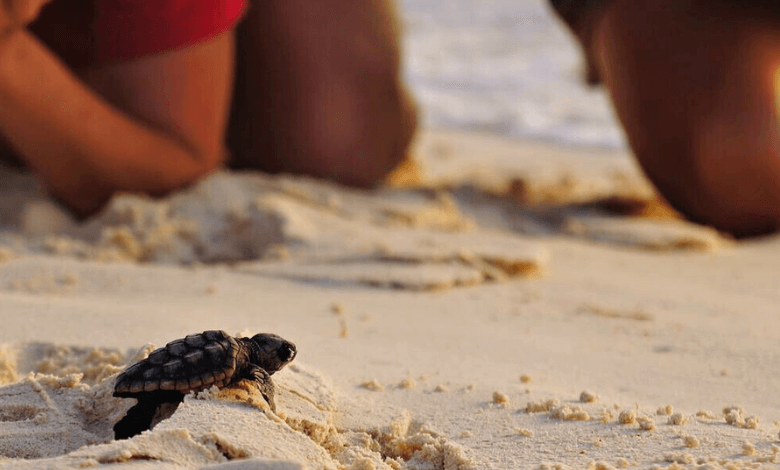Florida Turtle Nests: Climate Change Shifting The Female-To-Male Balance

This year, green sea turtles had a splendid nesting season on Florida’s beaches, with volunteers counting more than 74,300 nests. The count will continue through October 31.
The preliminary data beats the previous record, from 2017, by a whopping 40% – with Simona Ceriani, a research scientist who co-ordinated the annual survey for the Florida Fish and Wildlife Conservation Commission, calling the increase an explosion and a welcome surprise.
However, researchers are not ready to claim a conservation victory just yet. Jeanette Wyneken at Florida Atlantic University called the impressive nesting numbers just “half the story”.
That’s because the sex of a baby sea turtle isn’t determined by its DNA but by the temperature of the sand in which its egg developed. Sea turtles are particularly more sensitive to a warming climate, with cooler temperatures meaning males and warmer ones meaning more females.
According to Dr Wyneken, the proportion of male green sea turtle hatchlings has been dwindling substantially. Between 87% and 100% of the hatchlings she recently tested have been female.
How A Skewed Sex Ratio Could Actually Be A Boon.
Such a distorted sex ratio could actually be a boon in the short term. A breeding female sea turtle lays between two and nine clutches of about 110 eggs each in a season. Therefore, a greater proportion of females means more nests 20 years down the road.
The same is true as long as “there is enough boys to service the girls,” added Dr Wyneken. While global warming could be contributing to the nesting boom, conservationists also deserve credit.
Furthermore, it’s tempting to think of sea turtles as climate change ‘winners’ as their populations become increasingly female, thus raising the potential for accelerating growth. But research suggests climate change will outstrip the adaptive advantage of feminization.
ALSO READ: NYC Flooding: Can Big Apple’s Infrastructure Handle Modern Storms?
More and more frequently, the nests Dr Wyneken mark in June remain painfully still by August, when they should be teeming with hatchlings.
Initial studies indicate those eggs are not unfertilized, but were most likely killed by extreme heat and dryness. How the authorities in Florida treat nests and hatchlings moving forward will be critical, said Dr Ceriani, a research scientist.
